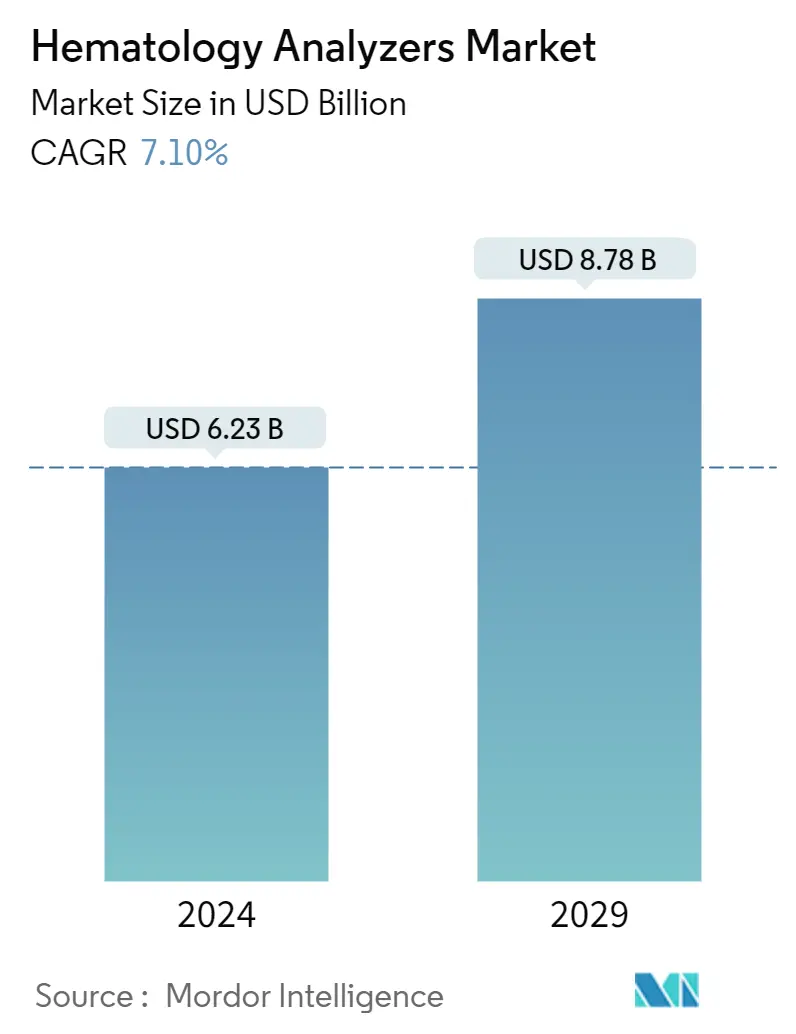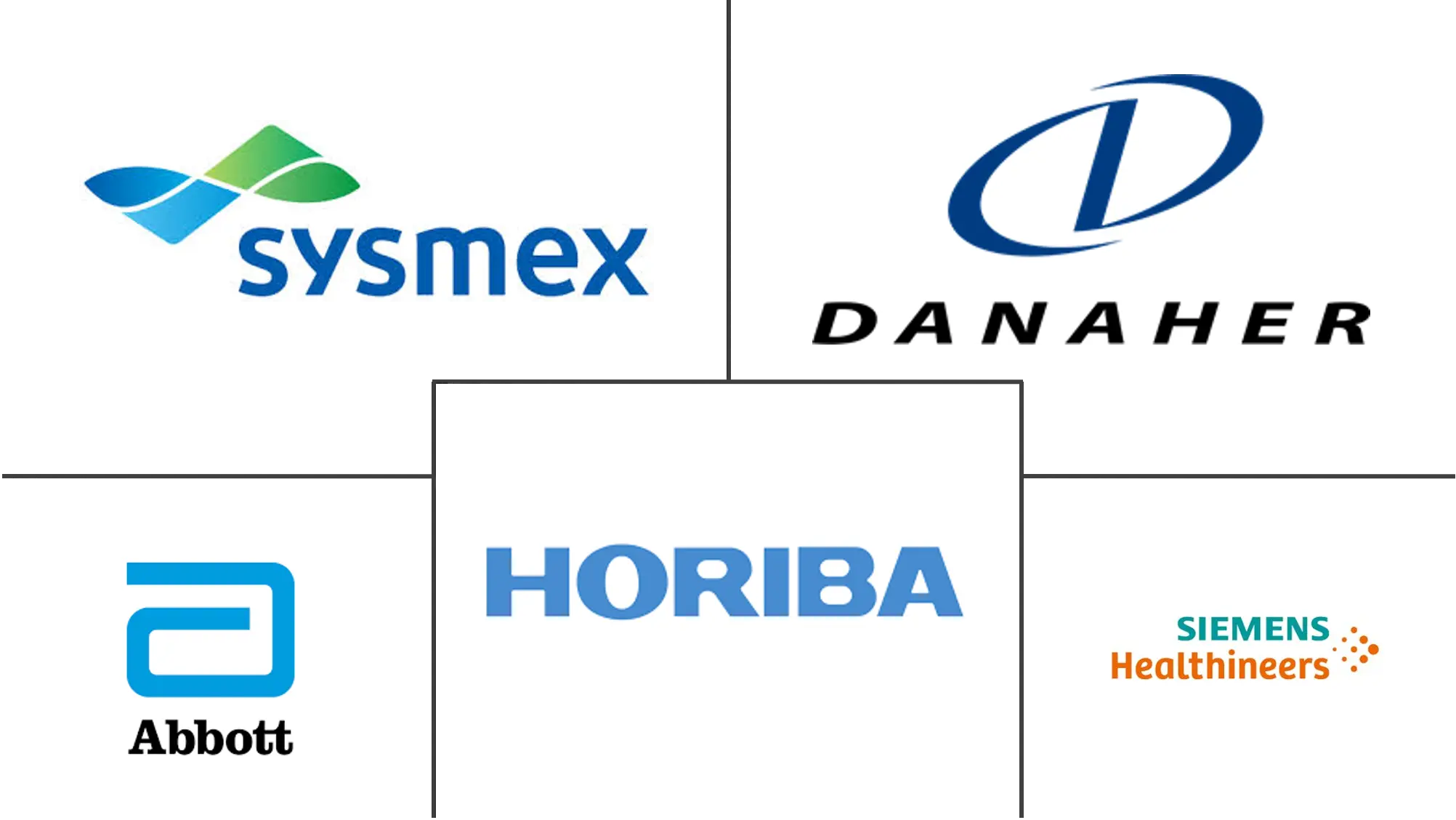Market Size of Hematology Analyzers Industry

| Study Period | 2021 - 2029 |
| Market Size (2024) | USD 6.23 Billion |
| Market Size (2029) | USD 8.78 Billion |
| CAGR (2024 - 2029) | 7.10 % |
| Fastest Growing Market | Asia Pacific |
| Largest Market | North America |
Major Players
*Disclaimer: Major Players sorted in no particular order |
Need a report that reflects how COVID-19 has impacted this market and its growth?
Hematology Analyzers Market Analysis
The Hematology Analyzers Market size is estimated at USD 6.23 billion in 2024, and is expected to reach USD 8.78 billion by 2029, growing at a CAGR of 7.10% during the forecast period (2024-2029).
There was an increasing focus on the hematology parameters for the assessment of COVID-19 around the world. Various research studies published provide insight into the effects of the pandemic on the market. For instance, in April 2021, a study published in the National Library of Medicine stated that the ongoing COVID-19 pandemic had an impact on the laboratory hematology community. Nevertheless, the pace of COVID-19 hematology-related research has continued to accelerate and has established the role of laboratory hematology data for many purposes including disease prognosis and outcome. However, initiatives such as partnerships by key market players are expected to increase the market growth. For instance, in January 2021, F. Hoffmann-La Roche AG signed a global business partnership agreement with Sysmex Corporation that allows Roche to distribute Sysmex hematology testing products, including instruments and reagents. Thus, with such initiatives, the market is likely to grow over the forecast period.
The major factors for the growth of the hematology analyzers market include the rising burden of blood disorders, increasing technological advancements, and rising adoption rates of automated hematology instruments. Blood disorders have become a global health issue with different causes and are associated with high mortality. Blood disorders, such as anemia, blood cancers, hemorrhagic conditions, and infections in the blood, affect millions of people each year across all age groups. According to the Australian Government, Department of Health and Aged Care report in 2022, more than 330,000 affected infants are born each year (83% sickle cell disorders and 17% thalassaemias), around 7% of pregnant women are carriers of hemoglobin disorders, and over 1% of couples are at risk at a global level.
Similarly, according to the World Federation of Hemophilia report updated July 2022, more than 1,125,000 men worldwide have an inherited bleeding disorder, and 418,000 of those have a severe version of the most undiagnosed disease. Early diagnosis and treatment are the best ways to protect the quality of life of a patient with a blood cell disorder. Hence, the increasing burden of blood disorders is likely to drive the market in the future.
Product launches are another factor in market growth. For instance, in July 2022, CellaVision launched DIFF-Line. CellaVision DC-1 is a single-slide analyzer that automates and digitizes the process of analyzing peripheral blood smears. Thus, such product launches are expected to increase market growth over the forecast period.
However, the high cost of hematology analyzers and time-consuming and stringent regulatory policies associated with the same is restraining the overall market growth.
